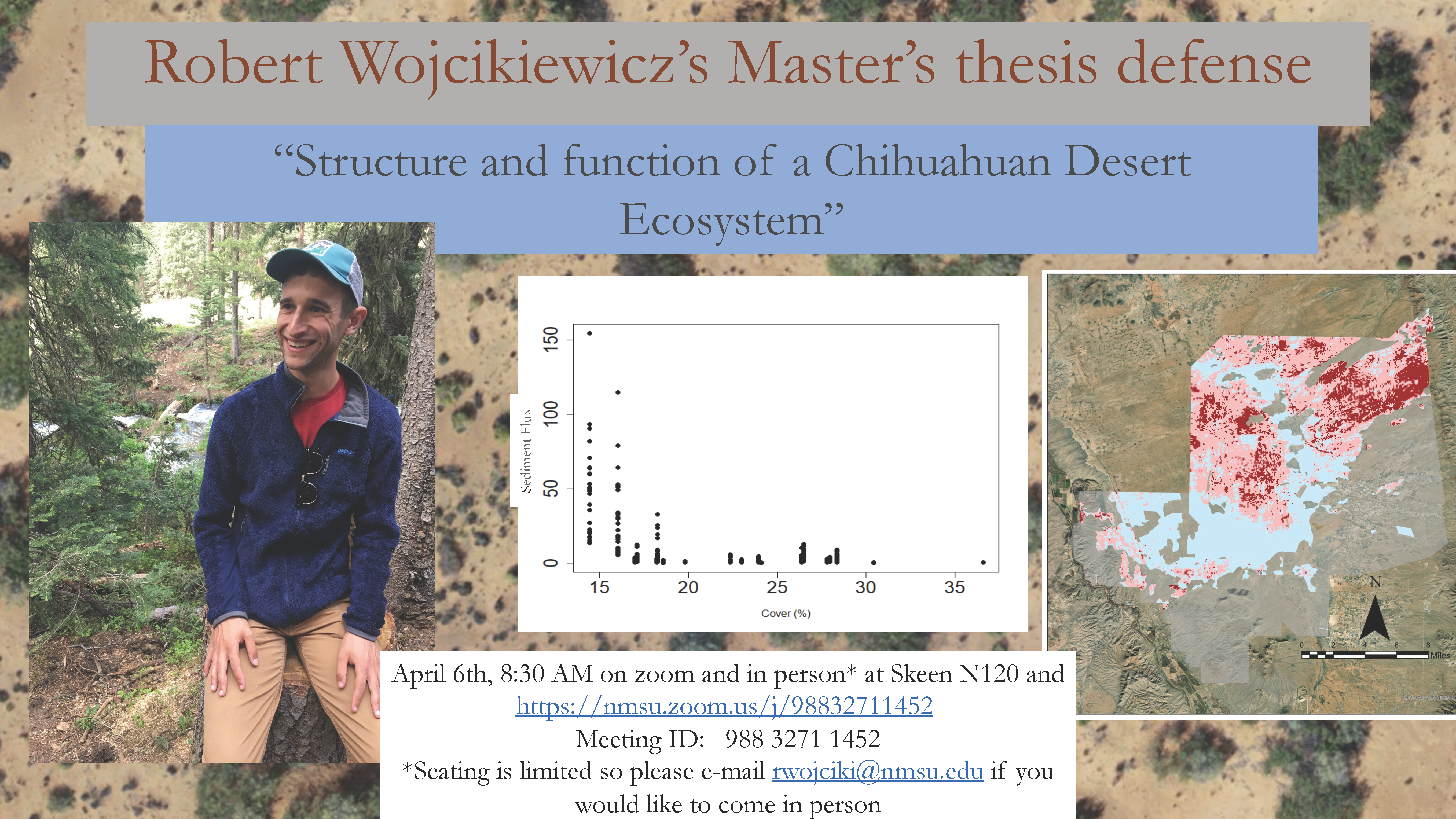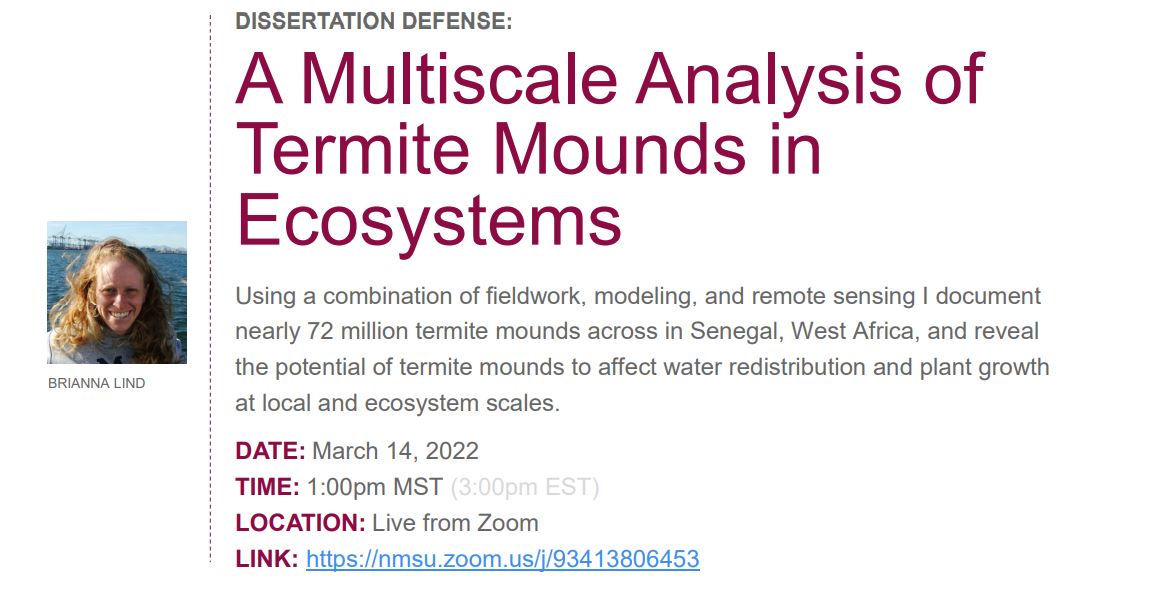
SAVANNA LAB
The whole world is a savanna; forests and grasslands are just special cases

The whole world is a savanna; forests and grasslands are just special cases
Welcome! The Savanna Lab (lab members) at New Mexico State University studies the structure, function, and ecology of arid ecosystems, including the shrublands and grasslands of the Northern Chihuahuan Desert, the grazing lands and savannas of Africa, and the other temperate and tropical drought-seasonal systems of our globe (our research). Our research spans diverse spatial and temporal scales, ranging from detailed plot-based experimentation, to landscape-scale observations, and finally reaching regional and global scale remote sensing and modeling. We are interested in fundamental ecological theory for arid ecosystem function, applications in grazing land sustainability and pastoral livelihoods, and the implications for global biogeochemical cycles, climate change and land surface-climate interactions (our publications).
April 29 11 2024
Data consists of leaf area index data from Moderate Resolution Imaging Spectroradiometer (MODIS) Level 4, and Leaf Area Index (LAI) product (MCD15A2H Version 6.1) available every 8-days at 500 m pixel size. From the native MODIS LAI, the data is processed further to generate three layers including: a smoothed and gap filled LAI layer referred to as aggregate leaf area index, denoted as LAIA; and two additional layers processed using an algorithm developed in Kahiu and Hanan (2018) to separate woody LAI (LAIW, tree and shrubs), and herbaceous LAI (LAIH, grass and forbs)
Link: https://www.dropbox.com/scl/fo/7pn5dicmal6n68jqb0p6c/h?rlkey=ti308jk2jm9twrrfxozuskm2k&dl=0
The current subset focuses mostly on Kenya.
The project was funded by: The National Academies of Sciences, Engineering, and Medicine-Partnerships for Enhanced Engagement in Research (PEER) Cycle 8 grant (PI Njoki Kahiu), CGIAR Research Programs at the International Livestock Research Institute (ILRI CRPs; 2020-2021) and NASA-SERVIR Applied Science Team program (PI Hanan, #80NSSC20K0162).
 MS Thesis Defense: Robert Wojcikiewicz
MS Thesis Defense: Robert WojcikiewiczApril 05 2022
Title: Structure and function of a Chihuahuan Desert Ecosystem
Time/Date: April 6th at 8:30 am MDT
Where: Zoom
Robert examines the relationship between vegetation structure and the response of associated ecological functions and biophysical processes in a shrub-dominated US Southwest landscape, specifically the Jornada Basin Long-Term Experimental Range. Flyer Link.

March 02 2022
Title: A Multiscale Analysis of Termite Mounds in Ecosystems
Time/Date: March 14th at 1:00 pm MST
Where: Zoom
Brianna Lind has documented nearly 72 million termite mounds across Senegal, West Africa, and her research reveals the potential of termite mounds to affect water redistribution and plant growth at local and ecosystem scales. Flyer Link.
November 11 2021
Frontiers in Environmental Sciences has just published a new article for COP26. In this article, Niall Hanan and other colleagues reviewed the current literature and found there is a globally significant amount of carbon stored in drylands. Future management of dryland carbon will need to consider local ecological contexts that can enhance carbon in vegetation and in soil organic and inorganic carbon, while ensuring ecological integrity of dryland systems and provision of critical services to dryland populations.
August 06 2021
Frontiers in Environmental Sciences have launched a new specialty section “Drylands” with Niall Hanan, and several Savanna Lab members and colleagues from around the world serving on the Editorial Board. The Drylands section brings together interdisciplinary research focused on global drylands, including tropical and temperate, high latitude and high elevation deserts, savannas, grasslands and related arid, semi-arid and drought-seasonal environments.
August 06 2021
Use MachineLearning and find it challenging to derive the underlying functional relationships from the "black boxes"? Check out our new research led by Qiuyan Yu in Methods in Ecology and Evoloution "Study becomes insight: Ecological learning from machine learning" (article link).